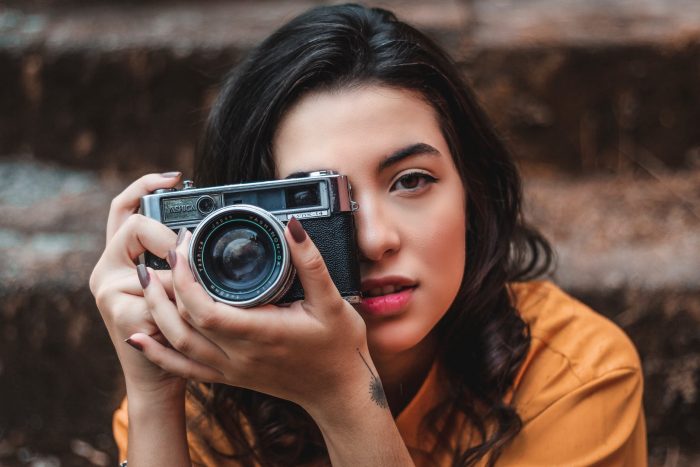It wasn’t that long ago that you had to take your camera to a store and wait to get your movie evolved – however, over the past decade or so, digital cameras have exploded in popularity. Although early digital cameras were pricey and the image wasn’t remarkable, present-day cameras offer high-quality pictures and a wealth of features. Even camera phones are beginning to rival their complete-sized opposite numbers as technology improves. Digital images help you immediately see your pics and the best ones. Digital photographs are also immaculate to share with your buddies, circle of relatives, or the public through the net, social networks, or email.
SLR stands for Single-Lens Reflex. SLR cameras allow the photographer to see precisely what the digital camera sees once they glance through the viewfinder without moving into too many technical elements. Cheaper cameras (in the days before virtual pictures) used lenses for the actual camera and the viewfinder. This could result in photos looking distinct from how they were meant, particularly when it comes to close-up photographs. DSLR stands for Digital Single-Lens Reflex. They can display a preview photograph in addition to a viewfinder lens. Like older SLR cameras, they accurately show the photographer what the last picture will appear.

Benefits of a DSLR
A first-rate DSLR is now within reach for keen amat due to the enhancing era and falling feeders. Compared to compact cameras, they could produce high-quality, more creative pics. One of the primary benefits of a DSLR is that you may use interchangeable lenses to produce one-of-a-kind results – consisting of an extensive-perspective lens for spectacular panoramic photographs, a telephoto lens for zooming in from lengthy distances, or a macro-lense for photographing tiny objects. You can also use various accessories, such as tripods and one-of-a-kind flashes.
As for drawbacks, the plain one is that they may be more costly than compact cameras. All the more packages together with lenses and cases can also be expensive. Some people will locate them as complex and fiddly, so a DSLR won’t be for you if you need to take a photo with minimum trouble. If you’re a wannabe professional photographer who can afford all the tools, a DSLR could be your avenue.
The exceptional photographs involved in a digital camera depend on the camera’s decision, measured in megapixels (or MP). A digital picture comprises hundreds of thousands of tiny, colored squares known as pixels. The more pixels packed into an image, the sharper and more exact the photo will appear. Fewer pixels bring about a grainy or blurry searching picture.
The higher the decision of your snapshots, the bigger you’ll be capable of printing them. A high-resolution digital camera will even give you the capacity to crop your photographs without dropping excessive detail. The only drawback of taking very hello-res snapshots is that the images will take up extra space for your memory card.
Mobile phones that would take pics used to be a piece of a gimmick, simplest permitting users to take small, grainy photos. They had been handy for taking and sharing brief pics. However, they weren’t appropriate for taking proper images that you can print in big sizes.
That has begun to trade, however. In recent years, telephone producers have discovered approaches to squeeze plenty of technology into a small area. The Nokia Lumia 1020, for instance, has a 41-megapixel sensor that’s better than many cheap cameras.
Another major downside of many digicam phones was that they used a set cognizance and digital zoom, which made taking lengthy-range and close-up pictures difficult. However, some cameras and the Samsung Galaxy S4 Zoom look more like compact cameras, proposing a complete optical zoom lens.
Out of necessity, smartphone cameras generally tend to have a tiny lens. From time to time, this creates a completely diffused fish-eye effect that’s maximum great while taking near-range photographs of people’s faces.
Benefits of telephone cameras
Despite their boundaries, there are a few regions wherein smartphones excel. The obvious one is social sharing – cell phone usage is the easiest way to get a photo on a social networking website along with Facebook, Twitter, or Instagram. You can immediately add your photo from your smartphone via WiFi or 3G. In contrast, you’ll have to mess around with cables, memory playing cards, and a computer to get pics off your digital camera (that said, some more modern compact cameras are internet-enabled).
Many (but not all) smartphones have front-facing cameras, which allow you to point the camera at yourself and still be capable of seeing the preview on the display screen. Remember that the front-facing camera regularly has a lower decision than the primary rear-facing digital camera. Smartphones also have laugh apps that permit you to add consequences and filters to your snapshots.













